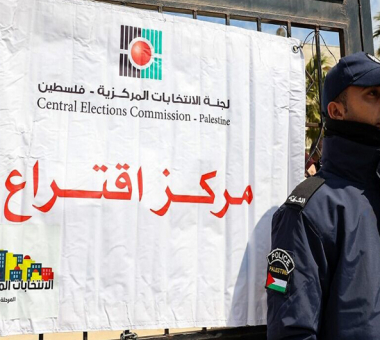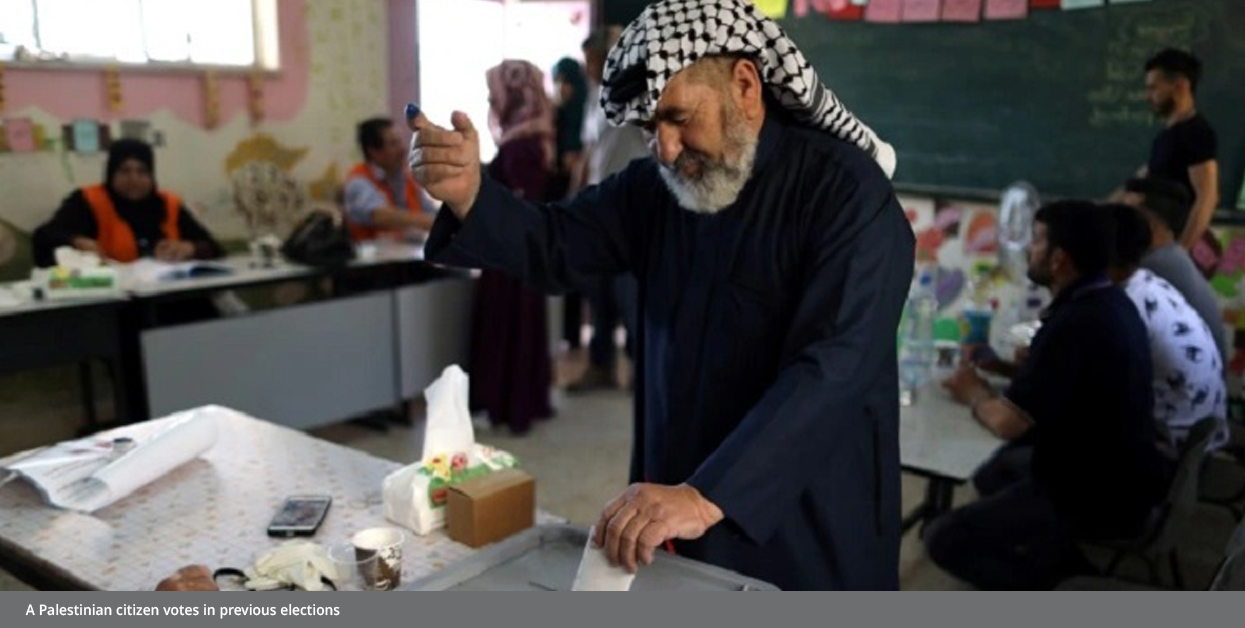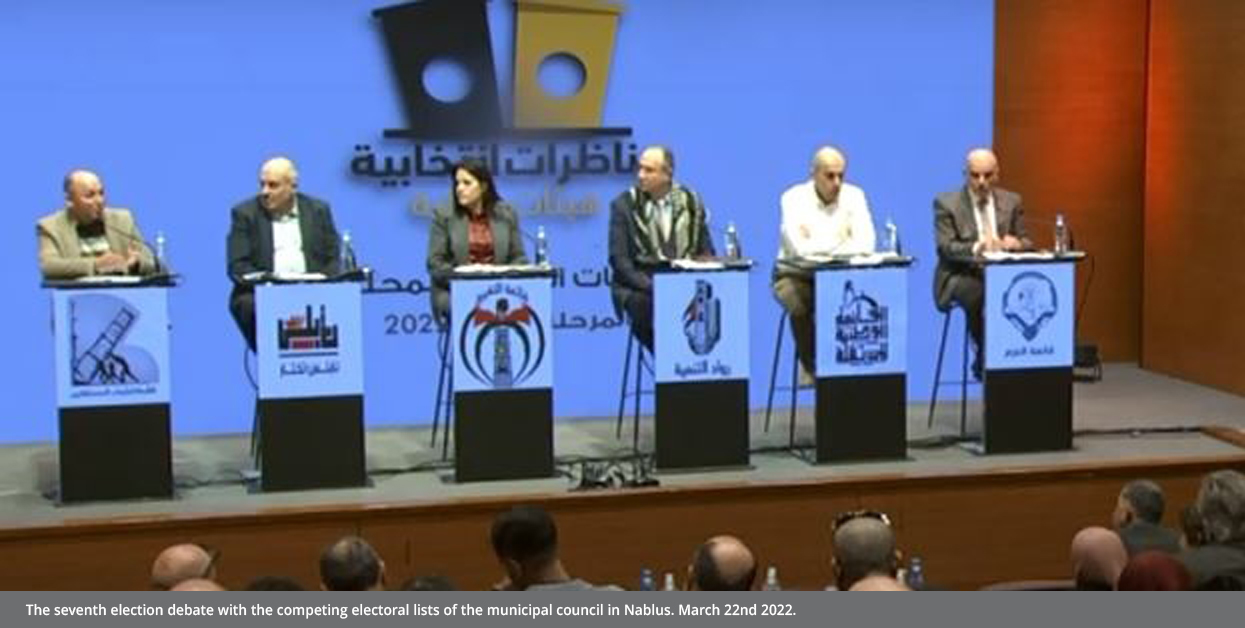A Detailed Reading in the West Bank Local Elections
This paper tackles the results of the second round in the local Palestinian elections within the West Bank which were held on March 26th 2022. The results attempt to present a detailed reading where they assume that these elections acquire political dimensions in the Palestinian Status and they will have consequences on the future of the political conditions particularly in the West Bank.
by STRATEGIECS Team
- Publisher – STRATEGIECS
- Release Date – Apr 5, 2022

Introduction:
The second round of the local Palestinian elections scheduled on March 26th 2022 and the Palestinian Central Elections Commission has announced the official results in the morning of the following day. The results carried a set of key indications such as:
- The final ballot percentage was 53.69% numbering 715,413 voters compared to 66.14% in the first round numbering 405.687 voters.
- The percentage of seats the independent lists had gained in the second round was 64% of the total seats being contested numbering 632 seats compared to the 70.86% of total seats the independent list gained in the first round numbering 1.503 seats.
- The party lists gained 35.6% in the second round compared to the 29.14% in the first round.
Most importantly, the ballot percentage of the key indications decreased compared to the first round contrary to the expectations of the Central Elections Commission, and the percentage of seats the party lists gained slightly increased compared to the first round, but the most significant indications lie in the details which were not mentioned in the report of the central elections commission.
Elections from the Perspective of Fatah and Hamas:
The results of the elections for both movements Fatah and Hamas are considered a chance to assess their organizational and public power on the one hand, and to renovate the political as well as electoral legitimacy on the other hand especially after the annulment of the general elections and the absence of any signs to hold them in the future.
Externally, the results carry political messages to all parties involved in the Palestinian Case such as (Israel, Jordan, Egypt, regional states, European Union and the United States of America). Despite their different targets, both movements' messages seek the same objective which is: Who is the strongest and most trustworthy party to represent the Palestinian people.
As for Fatah in particular, the local elections face many internal crises, especially those concerning the future of the Palestinian situation in general and the future of the movement in particular, besides its parties attempt to consolidate their political, public and organisational position through winning the local elections in the cities and provincial centres.
As for Hamas, it initially realizes the effect of internal disputes within Fatah and tries to use them to strengthen its political presence and consolidate its internal front in the West Bank after banning its activity for years following the events of Gaza in 2007. That’s why the movement manoeuvred its public stand that boycotts the elections as an expression of refusal to postpone the general elections and participated visibly through the presence of its symbols, figures and historical leaders in the independent list as well as in the coalition with the popular front or through tacit support for certain list, while at the same time it prevented holding municipal elections in Gaza Strip.

Regardless of election results, it seems that Fatah did not learn lessons from the first round results of the local elections. It failed to record even one single list of its own in many local bodies, notably the large ones, and could not also overcome its internal disputes. Instead, the disputes deepened and were expressed through ‘non-official lists’ forms in the movement competing within each commission as follows: 4 lists in Al-Eizariya town in Jerusalem, 2 lists in Beit Jala and Beit Sahour, 3 lists in Ad-Dhahiriya, 2 lists in Dura and 2 lists in Yata. Therefore, Fatah appeared to be a disjoint movement under the burden of internal disputes.
Detailed Indications:
The most significant detailed indications in the results have emerged prominently in the cities and provincial centres which are the most populated on the one hand, and the centre of partisan as well as political activity on the other hand, particularly the three big cities in the West Bank (Al-Khalil, Ramallah with the Al-Bireh and Nablus) where Fatah ran elections on an official list named ‘construction and liberation’ in five cities: Al-Khalil, Jenin, Tulkarm, Qalqilya and Beit Sahour, but it also ran elections on multiple non-official lists in the rest of the cities. While Hamas participated on independent lists within multiple alliances in Al-Khalil, Nablus, Ramallah, Al-Bireh, Jenin, Tulkarm and Qalqilya.
Winner candidates of Fatah official lists were 47 against 118 candidates from the independent lists. In Al-Khalil, the largest city of the West Bank, the independent list ‘Al- Wafa'a for Al-Khalil’ won 8 seats out of 15 seats, while Fatah official list ‘Construction and Liberation’ won 6 seats. In Tulkarm, Karmyon mass won 8 seats against 7 seats of the Fatah official list but could not win more than 3 seats out of 13 in Beit Sahour, which is the same result in Halhul city in Al-Khalil. Fatah official lists failed to win except in Jenin winning 8 seats out of 15 and 7 seats out of 15 in Qalqilya against 5 seats for Al-Amal mass which is formed by Hamas alliances and the public front while the independent mass won three seats.
In the cities where Fatah failed to record official lists of its own, the ‘Nablus Choose’ mass close to Fatah in the city of Nablus won 8 seats out of 15 against 7 seats to ‘Al-Azm’ mass which joins Hamas coalition and the Independents, and ‘Abna'a Al-Balad’ mass close to Fatah in the city of Ramallah won 9 seats out of 15. While ‘Al-Bireh gathers us’ list which joins Hamas alliance and the Independents in the city of Al-Bireh won 8 seats out of 15.

Reading the Indications:
Throughout the previous results and their most prominent indications we come up with a preliminary reading summarized in number of points:
First: The indication of the increased percentage of seats the partisan lists have gained compared to the first round is a low indicator, which means that the Fatah has pushed at full power these official and non-official lists which are mostly sanctioned or close to it, while the other partisan lists are few leftist lists in areas of relatively low importance. Despite this, the percentage of seats of partisan lists did not exceed 6% and remained low compared to the seats the independent lists gained which partially joined Hamas and its alliances.
Second: The indicator of Fatah official list ‘instruction and liberation’ results in cities indicates two dimensions: the dimension of internal disputes within Fatah and the dimension of its competitive ability, because Fatah official mass didn’t win an absolute majority (half + one) in any city except in Jenin and it achieved the first place among the three masses in Qalqilya but was not able to achieve the absolute majority and lost against an independent mass that includes Hamas figures in Tulkarm and Al-Khalil, noteworthy that the city of Al-Khalil and its governorate represent the highest percentage in the West Bank in terms of space and population.
Third: The indicator of Fatah non-official lists' results in the cities also indicates both previous dimensions. The non-official mass of Fatah won by the absolute majority in Nablus, the second largest Palestinian city. It also won by the absolute majority in Ramallah (the temporary capital and centre of power), but it lost in Al-Bireh noteworthy that Ramallah and Al-Bireh are actually considered one city and they are the centre of one governorate (Ramallah and Al-Bireh governorate)
In this regard, non-official lists of Fatah seem better able to copmete and gain high results more than its official lists which indicate the citizens’ negative attitudes towards the official Fatah by virtue of its connection with the authority on the one hand and the role of active domestic and social factors related officially to Fatah on the other hand. But the problem with the non-official lists is that they are not subject to Fatah's official organisational decisions despite their commitment to its political line.
Consequently, internal disputes in Fatah emerged and the leadership was not able to form unified official lists in Nablus, Ramallah and Al-Bireh despite the danger posed by independent lists which indicate the depth and intensity of these disputes. The significance of this indicator will be of utmost importance if Fatah leadership and the authority would think of holding general elections in the future.
Fourth: Fatah had portrayed the results as an ‘overwhelming victory’ of the movement lists and its partners as it stated officially relying on general formulas away from the indicating signs previously mentioned and focusing on two issues: the approach it practises within the internal scope and in the Palestine Liberation Organisation since it was founded, and it practises it with complete freedom and transparency in the Palestinian society under the national authority since 1966. The other issue as Fatah stated officially is its deep regret about Hamas decision to prevent holding elections in Gaza Strip and deprive our people there from their legal guaranteed right to vote.
Fifth: The political reading of the second round in the West Bank local elections is based on both issues referred to in Fatah official statement, as they carry many messages and possibilities especially in the light of the decision to cancel the general elections and eliminate them in the near future. The most important of these messages is the one that addresses the international community and the European Union aiming to show abroad that what happened in the local elections is a fully popular practise that renovated the legitimacy of authority since the ruling party lists (Fatah Movement) won the elections and that Hamas prevents standing for the general elections by rejecting general elections to be hold in the Gaza Strip.
Sixth: The indicator of progress in independent lists which includes figures from Hamas boosts the claim that the popularity of Palestine National Authority is declining, however, any participation of Hamas figures remains inconsistent with the authority power and electoral weight, particularly since the elections did not include the Gaza Strip. Therefore, the local results are inevitably reflected on general elections.
Conclusion:
This was a preliminary reading in the results of the Palestinian local elections and it is a reading that requires further research into its political connotations in the future in the light of relevant parties' attitudes regarding the results. As many connotations correlate with attitudes and reactions that will take place in Palestine, Israel, the Arab Countries, the region and the world.

STRATEGIECS Team
Policy Analysis Team
 العربية
العربية